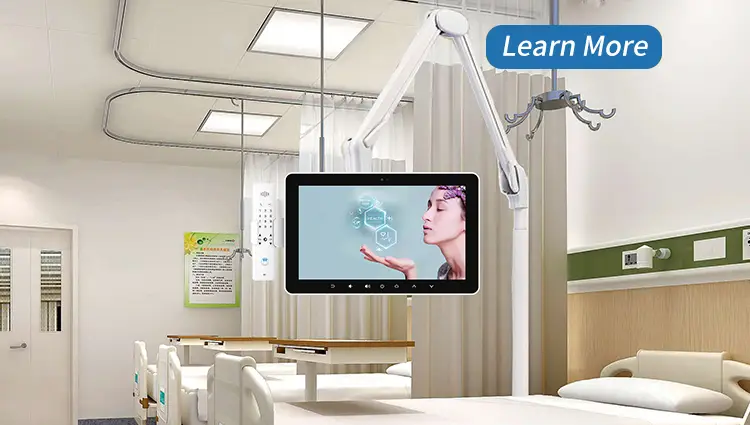The healthcare landscape in 2025 is undergoing a seismic shift, driven by the integration of smart terminals—AI-powered devices and systems that streamline diagnostics, treatment, and patient management. These innovations are not merely incremental improvements but transformative tools reshaping care delivery. Below, we explore their impact across critical domains of healthcare.
1. Redefining Diagnostics: Precision at the Point of Care
Smart terminals have revolutionized diagnostic accuracy and speed. For instance, AI-enhanced imaging systems now analyze radiological scans (e.g., X-rays, MRIs) with unprecedented precision, flagging anomalies such as early-stage tumors or micro-fractures that human radiologists might overlook. In 2025, these systems are embedded directly into imaging devices, enabling real-time analysis during scans. A study from Johns Hopkins Hospital reported a 30% reduction in diagnostic errors after adopting integrated AI tools.
Portable smart terminals, such as handheld ultrasound devices paired with AI algorithms, empower frontline healthcare workers in remote areas. These tools provide instant interpretations of scans, bridging the gap between resource-rich urban centers and underserved regions. For example, in rural India, community health workers use AI-driven devices to screen for tuberculosis, reducing diagnostic delays by 70%.
2. Smart Surgical Systems: Enhancing Precision and Outcomes
AI-assisted robotic surgery has evolved beyond experimental stages. In 2025, platforms like the Da Vinci 5.0 integrate real-time predictive analytics, adjusting surgical trajectories based on patient-specific data. Surgeons at Mayo Clinic reported a 25% decrease in postoperative complications when using these systems for complex cardiac procedures.
Smart terminals also enable remote surgery. With 5G connectivity, specialists in New York can guide procedures in Nairobi, leveraging haptic feedback robots to replicate the tactile experience of surgery. This capability is particularly transformative in regions with limited access to specialized care.
3. Proactive Patient Monitoring: From Hospitals to Homes
The rise of wearable smart terminals—such as ECG patches and glucose monitors—has shifted care from reactive to proactive. These devices transmit data to centralized AI platforms, which detect anomalies (e.g., arrhythmias, hypoglycemia) and alert caregivers before emergencies arise. A 2025 trial by Stanford Health showed a 40% reduction in hospital readmissions for heart failure patients using such systems.
For elderly care, passive monitoring technologies like radar-equipped wall sensors track movement and vital signs discreetly, reducing the stigma of constant surveillance. In Japan, these systems have cut fall-related injuries by 50% in assisted-living facilities.
4. Streamlining Administrative Workflows
Smart terminals are alleviating administrative burdens through AI-driven automation. Natural language processing (NLP) tools now draft clinical notes from doctor-patient conversations, saving physicians 15 hours per week on documentation. At Cleveland Clinic, an AI scheduler optimizes operating room allocations, reducing idle time by 20%.
Billing and coding have also been transformed. Autonomous coding systems assign accurate diagnostic codes in real time, minimizing claim denials. Massachusetts General Hospital reported a 35% drop in billing errors after implementing these tools.
5. Ethical and Operational Challenges
Despite progress, challenges persist. Data privacy remains a concern, particularly with cross-border telemedicine. Regulatory frameworks struggle to keep pace: the EU’s AI in Healthcare Act (2024) mandates strict data anonymization, but enforcement gaps linger.
Interoperability is another hurdle. Many smart terminals operate in silos, hindering data integration. Initiatives like the Global Health Data Alliance aim to standardize protocols, but adoption is uneven.
Conclusion: A Paradigm Shift in Healthcare
By 2025, smart terminals have transitioned from niche tools to foundational components of patient care. They enhance diagnostics, enable precision treatments, and democratize access to quality healthcare. However, their full potential hinges on addressing ethical dilemmas and fostering global collaboration. As these technologies mature, they promise not just incremental change but a reimagined future for healthcare—one where efficiency and empathy coexist.
4: Integrated AI informatics and workflow solutions (2025).
5: Predictions for AI in home testing, passive monitoring, and administrative automation (2025).
6 Applications in diagnostics, surgery, and patient management (2024).

